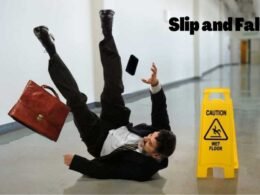Filing a claim for paralysis following a workplace accident in Los Angeles demands a meticulous approach, beginning with an immediate report to the employer and completing the DWC-1 form within the mandatory 30-day period. Essential medical documentation, alongside accident reports and witness accounts, are pivotal to establishing the claim’s validity. Understanding the nuances of California’s workers’ compensation laws is vital. Missing the one-year deadline could severely impact the chance of obtaining rightful compensation.
Understanding the Nature and Impact of Paralysis
Paralysis, a severe medical condition resulting from damage to the nervous system, profoundly affects an individual’s physical capabilities and quality of life. There are multiple paralysis types, each presenting unique challenges and requiring specific legal considerations. Quadriplegia, paraplegia, and hemiplegia represent varying degrees of functional impairment, dictating the scope of accommodation and compensation claims. The emotional impact of paralysis cannot be overstated; victims often experience profound psychological distress, necessitating thorough mental health support. Legal professionals must adeptly navigate these complexities, ensuring clients receive just recompense for both physical and emotional injuries. Expert understanding of paralysis types and their implications is imperative in constructing a compelling legal argument, safeguarding victims’ rights, and affirming their dignity under the law.
Recognizing the Importance of Timely Medical Evaluation
In the aftermath of a workplace accident resulting in paralysis, the immediacy of medical evaluation cannot be overstated, as it plays a pivotal role in securing early diagnosis benefits. Such prompt assessment is critical in preventing the escalation of complications, thereby safeguarding the claimant’s health and legal standing. Furthermore, timely medical intervention strengthens the evidentiary basis of a legal claim, facilitating a more robust pursuit of rightful compensation.
Early Diagnosis Benefits
Timely medical evaluation serves as a cornerstone in the effective management of workplace injuries that may lead to paralysis. Early diagnosis advantages cannot be overstated, as they greatly influence the long-term prognosis of affected individuals. The immediate identification of spinal injuries enables healthcare professionals to initiate appropriate medical interventions, potentially mitigating the severity of paralysis. This proactive approach is instrumental in enhancing functional recovery and optimizing rehabilitation outcomes. In addition, an early diagnosis guarantees that legal claims are substantiated with thorough medical evidence, strengthening the injured party’s position in pursuit of compensation. Timeliness in medical evaluation not only fosters better health outcomes but also upholds the integrity of the legal process, providing a robust foundation for rightful claims in the aftermath of workplace accidents.
Preventing Complications Promptly
Prompt recognition and management of potential complications following a workplace injury are imperative to preserving the health and legal rights of the injured party. Delaying medical evaluation can exacerbate conditions, complicating both physical recovery and legal proceedings. Implementing timely preventive measures is essential. Medical professionals must assess the injury immediately to identify risks of paralysis or other severe outcomes. By integrating effective rehabilitation techniques early, the injured party can minimize long-term disability. This proactive approach not only aids physical recovery but also strengthens the integrity of any legal claim filed under workers’ compensation law. Legal practitioners advocate for immediate medical consultations post-accident to document injuries thoroughly, ensuring rightful compensation and facilitating a smoother rehabilitation journey for the affected individual.
Gathering Essential Evidence for Your Claim
Although maneuvering through the complexities of a workplace injury claim can be intimidating, assembling essential evidence is a critical cornerstone to building a compelling case for paralysis resulting from such an accident. Evidence types are varied and pivotal, including medical records, accident reports, and eyewitness statements. Employing robust documentation strategies enhances the credibility of the claim. Medical records must meticulously detail the extent of paralysis and link it directly to the workplace incident. Accident reports should precisely outline the circumstances, while corroborative eyewitness testimonies bolster the narrative of negligence or unsafe conditions. Surveillance footage, if available, provides an unassailable visual account. A systematic approach to gathering this evidence guarantees a thorough and persuasive submission, greatly increasing the likelihood of a successful claim resolution.
Navigating Workers’ Compensation Laws in California
Maneuvering through the intricacies of California’s workers’ compensation laws requires an extensive understanding of eligibility criteria, which determine an employee’s rightful access to compensation benefits following a workplace injury resulting in paralysis. This eligibility hinges on critical factors such as the nature of the employment relationship and the circumstances of the accident. Additionally, the filing process mandates strict adherence to procedural requirements and timelines, underscoring the importance of meticulous compliance to secure rightful benefits.
Eligibility for Compensation Benefits
Understanding the intricacies of eligibility for compensation benefits under California’s workers’ compensation laws is essential for individuals suffering from paralysis due to a workplace accident. Claim eligibility hinges on the adherence to specific compensation criteria set forth by California statutes. An injury must be work-related, necessitating a direct causal link between the workplace incident and the resultant paralysis. Furthermore, timely reporting of the injury to the employer is vital for maintaining eligibility. The employee must also be classified as covered under the employer’s workers’ compensation insurance to qualify for benefits. Maneuvering these legal prerequisites with precision guarantees that individuals can successfully secure the compensation necessary for medical treatment and lost wages, reinforcing the foundational principles of California’s workers’ compensation framework.
Filing Process Overview
Commencing the filing process for workers’ compensation claims in California demands a meticulous approach, given the complexity of the state’s legal framework. It is imperative to adhere to precise claim documentation requirements to guarantee a valid submission. This involves accurately completing the DWC-1 form and systematically gathering medical records, accident reports, and witness statements. An astute understanding of the claim timeline is equally critical, as claimants must notify their employer within 30 days of the injury and file the claim within one year. Steering through the labyrinth of workers’ compensation laws necessitates strategic action, ensuring compliance with statutory mandates. Failure to observe these procedural nuances may jeopardize the claimant’s eligibility for receiving benefits for paralysis sustained from workplace incidents.
Identifying the Liable Parties in Your Case
When determining liability in a workplace accident resulting in paralysis, one must meticulously examine all potential parties who may bear responsibility. Identifying liable parties requires a scrupulous review of the workplace environment, procedures, and equipment. Employers are often the primary focus, especially if workplace negligence, such as inadequate safety measures or failure to maintain equipment, is evident. However, liability may extend beyond the employer. Third-party contractors, equipment manufacturers, or even fellow employees could be implicated if their actions or products contributed to the accident. Legal counsel must evaluate contractual obligations, safety protocols, and compliance with regulatory standards to establish negligence. In doing so, they build a compelling case that accurately attributes fault, ensuring that the injured party receives just compensation.
Calculating the Full Extent of Damages
Evaluating liability forms the foundation for pursuing compensation, yet determining the full extent of damages is equally paramount in a paralysis claim. Calculating these damages requires a meticulous assessment of both immediate and long term effects resulting from the injury. The claimant must consider extensive financial considerations, including medical expenses, rehabilitation costs, and potential loss of income due to diminished earning capacity. Additionally, non-economic damages such as pain and suffering, loss of consortium, and diminished quality of life are integral to the total compensation sought. An accurate valuation necessitates expert testimony and thorough documentation to substantiate the claim. These factors collectively guarantee that the injured party receives fair and just compensation for the profound impact of paralysis on their life.
The Role of a Qualified Personal Injury Attorney
A qualified personal injury attorney plays an indispensable role in maneuvering the complexities of filing a paralysis claim following a workplace accident. Their expertise begins with a thorough attorney consultation, evaluating the unique circumstances of the claimant’s case. By employing sophisticated legal strategies, they guarantee maximum compensation for the injured party. An adept attorney meticulously navigates through intricate legal documentation, interprets workers’ compensation laws, and identifies liable parties. Such legal acumen is pivotal in securing rightful redress. Additionally, the attorney’s ability to negotiate with insurance companies and opposing counsel often results in favorable settlements. Their advocacy extends to representing clients in court, safeguarding their rights. This professional guidance is essential to surmounting legal hurdles that can impede an equitable resolution.
Filing Your Workers’ Compensation Claim
Successfully filing a workers’ compensation claim for paralysis demands meticulous attention to procedural detail and thorough understanding of legal requirements. Critical to this process is the accurate completion of claim forms, which serve as the foundation of the compensation request. These forms must be filled out with precision, ensuring all relevant medical and incident details are clearly articulated. Submission deadlines are equally paramount. Failing to comply with these deadlines may result in denial of benefits, thereby exacerbating financial strain. In California, strict timelines dictate the submission process; hence, claimants must be vigilant in adhering to these statutory requirements. Many individuals choose to speak with a catastrophic Injury Lawyer to acquire extensive knowledge of the procedural nuances related to workers’ compensation law in Los Angeles, which is indispensable for securing rightful benefits following a paralyzing workplace accident.
Pursuing Additional Legal Options for Compensation
While the workers’ compensation system provides a fundamental framework for addressing injuries such as paralysis resulting from workplace accidents, it is not the sole avenue for obtaining financial relief. Victims may explore alternative compensation options through third-party claims if negligence by an external entity contributed to the accident. This legal action consideration is pivotal when seeking additional recovery beyond the limited benefits of workers’ compensation. Consulting with a legal expert specializing in personal injury can illuminate potential avenues, such as product liability if defective equipment was involved. Additionally, intentional tort claims against an employer, in rare circumstances where egregious conduct is evident, may also be viable. Pursuing these legal pathways requires thorough evaluation to guarantee alignment with California’s legal standards and procedural mandates.
Frequently Asked Questions
How Long Does It Take to Receive a Compensation Settlement?
The compensation timeline for settlement varies depending on several settlement factors, including the complexity of the case, insurance negotiations, and legal procedures. Expert legal counsel can facilitate an efficient resolution, ensuring just compensation for the claimant.
Can I Switch Doctors During My Treatment for Paralysis?
Switching doctors during paralysis treatment is permissible, yet ensuring treatment continuity is essential. Legal guidelines stipulate that doctor switching should not disrupt medical care, as maintaining consistent and effective treatment is vital for both recovery and legal proceedings.
Are Psychological Damages Considered in a Paralysis Claim?
Psychological impact and emotional distress are integral components of a paralysis claim. Legal claims must thoroughly address these issues, ensuring adequate compensation. Expert testimony often substantiates the claimant’s psychological damages for a persuasive and successful resolution.
What Happens if My Employer Disputes My Claim?
If an employer disputes a claim, the claim process becomes more complex. The employer response may involve challenging evidence or causation, necessitating legal expertise to navigate mediation, hearings, or potential appeals, ensuring fair adjudication of the claim.
Can I Receive Compensation if the Accident Was Partly My Fault?
In determining liability, negligence factors play an essential role. Even if partial fault exists, compensation remains possible. Legal principles of comparative negligence assess the extent of fault, allowing claimants to receive proportional damages despite shared responsibility.










